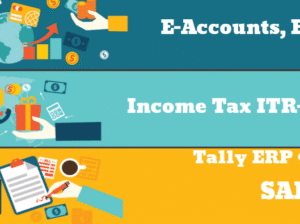3 Smart Ways To Maximize Google Ad Grants For Free Traffic
In charitable advertising, Google Ad Grants are limited. However, these constraints provide imaginative ways to boost free traffic. Three creative workarounds help NGOs maximize Google Ad Grants.
1. Leveraging Mobile App Extensions
Nonprofits have specific obstacles in the ever-changing Internet advertising market, especially when promoting applications via Google Ad Grants. Nonprofits promoting their apps are hampered by the platform’s default limits on universal app promotions. Mobile app extensions may boost exposure and engagement within these limits.
Unleashing App Visibility
Nonprofits may use mobile app extensions to circumvent Google Ad Grants’ text-only search network limitations. App extensions are permitted in the search network, unlike universal app advertising. This allows NGOs to promote their applications directly in search advertisements, reaching a wider audience and encouraging downloads and engagement.
Adapting To Dual Platforms
Nonprofits with Android and iOS applications need a customized strategy. There are two extensions, one for each platform, to provide complete support. This versatility allows enterprises to serve a broad user base and reach across devices, enhancing app impact.
Conversions In Focus
Additionally, mobile app extensions effortlessly support Google Ad Grant aims. App installations may be recorded as account conversions to assess marketing performance. Based on app conversions, nonprofits may evaluate app advertising and enhance methods.
Strategic Alignment
The app extension must support the nonprofit’s Google Ad Grants aims. Every app installation may increase the account’s success metrics if it serves a purpose. This strategy alignment guarantees that app advertising is Google Ad Grants-compliant and goals-oriented for the NGO.
Nonprofits may carefully use mobile app extensions to overcome Google Ad Grants’ restrictions and increase app exposure. This clever workaround lets companies expose their applications in search advertisements, engage more people, and monitor meaningful conversions. As NGOs adjust to the platform’s limits, mobile app extensions become helpful in boosting their digital impact.
2. Dynamic Search Ads: Expanding Reach On The Search Network
In the changing world of Internet advertising, NGOs using Google Ad Grants are generally limited to search network campaigns. Dynamic Search Ads (DSAs) are a strong tactic within these constraints. DSAs provide an active and effective search network reach solution beyond keyword targeting.
Beyond Keywords: The Essence Of Dynamic Search Ads
Dynamic Search Ads use a nonprofit’s website content instead of keywords. Using this unique method, Google may dynamically target individuals based on their search keywords and the nonprofit’s website content. DSAs help companies find new search phrases and overcome competitive keywords.
Setting Up Dynamic Search Ads
DSAs are easy to set up in Google Ad Grants. Nonprofits may set up Dynamic Search Ads by clicking “Show more settings” under “Networks” in campaign settings. This flexibility lets companies make the most of their website content and target customers who keyword ads would not reach.
Tailoring Content Sources
Nonprofits may utilize their website index, page feed URLs, or both as DSA content sources. This versatility lets firms modify their strategy to their website and campaign objectives. Using all pages may enhance exposure for individuals with a narrower reach or industry emphasis.
Monitoring And Optimization
DSAs may expand reach, but reports must track search keywords. Analyzing DSA marketing phrases that convert may reveal user intent. These new phrases may be deliberately included as target keywords in nonprofit accounts to optimize campaigns for long-term success.
Dynamics Search Ads provide NGOs with a strategic solution to Google Ad Grants. Dynamic website content targeting helps companies reach new customers, find new keywords, and increase traffic. DSAs become an active tool for NGOs to maximize Google Ad Grants exposure and effect on the search network.
3. Automated Bidding: Breaking The Max CPC Limits
Nonprofits typically need help with Google Ad Grants’ maximum cost-per-click limit. Nonprofits may need help to compete in digital advertising with a $2.00 manual bidding restriction. Automated bidding allows NGOs to break through max CPC constraints and increase exposure and conversions.
Understanding The CPC Limitations
Google Ad Grants accounts cannot manually set bids beyond $2.00. Nonprofits targeting competitive keywords or trying to optimize their money may need help with this constraint. Uncompetitive bids may lose possibilities for exposure and influence.
The Power Of Automated Bidding
Automated bidding works well to bypass Google Ad Grants’ max CPC limitations. Nonprofits may investigate automated bidding alternatives in campaign settings’ bidding area. “Maximize Clicks” is for companies looking to drive traffic without spending money, while “Maximize Conversions” and “Target CPA” are for companies with conversion statistics.
Elevating CPC Numbers
The use of automated bidding typically changes CPC values significantly. Nonprofits may have CPCs over $2.00, increasing visibility and ad exposure. This helps organizations maximize their Google Ad Grants money and increase impact and engagement.
Strategic Considerations
The nonprofit aims to determine the best-automated bidding technique. “Maximize Clicks” helps boost traffic and brand exposure. Nonprofits with reliable conversion statistics may choose “Maximize Conversions” or “Target CPA” to meet performance goals.
Real-life Success Stories
Real-world examples demonstrate how automated bidding transforms. Nonprofits have increased CPC numbers by using automated bidding tactics. This overcomes restrictions and boosts impressions, exposure, and conversions.
For NGOs struggling with Google Ad Grants, automated bidding offers hope. By using “Maximize Clicks,” “Maximize Conversions,” or “Target CPA,” firms may increase CPC figures over $2.00, opening additional opportunities for exposure and profitability. Automatic bidding helps NGOs utilize their Google Ad Grants accounts and achieve significant results.
Keep in Mine
Nonprofits must be creative to maximize their effect with Google Ad Grants. Mobile app extensions, dynamic search advertisements, and automated bidding help firms maximize campaign potential. Mobile app extensions boost exposure, dynamic search advertisements expand Reach, and automated bidding eliminates CPC limits. Nonprofits find fresh exposure, engagement, and conversion opportunities using these workarounds. These creative Google Ad Grants techniques help NGOs maximize their advertising efforts, build brand exposure, and advance their purpose online.







